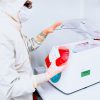Transferring a cell and gene therapy (CGT) product from development to manufacturing involves a detailed and comprehensive set of preparations. This process, known as tech transfer, ensures that the product can be reliably and consistently produced at scale while maintaining its quality, safety, and efficacy.
At Cell Therapies, technology transfers for CGT products are one of our specialties. We can help you with the important elements that a client must consider and help them realize the potential of research and get the Product from research into reality. This blog will clearly outline the elements required of each party involved in the service, and how they work together to ensure a successful tech transfer.
What the client should prepare
Documentation and Data Packages
This element alludes to the conjunction of data and documentation that enables a baseline understanding of the product and its intended use. This includes;
- Development History: Comprehensive records of the product’s development, including preclinical data
- Standard Operating Procedures (SOPs): All relevant SOPs for manufacturing, and quality control.
- Manufacturing Process Descriptions: Detailed process descriptions, including upstream and downstream processes, critical process parameters (CPPs), and in-process controls.
- Analytical Methods: Define methods for product characterization, release testing, and stability testing. Detailed description of QC tests for in-process samples, and final product.
- Release Criteria: Defined criteria for product release based on safety, purity, potency, and identity.
Material Requirements
This element provides details about the materials, substances and equipment needed in the manufacturing of the CGT product. This includes the specifications and sourcing information for all Raw Materials, including cell lines, viral vectors, and other critical reagents and a list of required Consumables and equipment, along with specifications and vendors.
Process Development and Validation
The successful development of the tech transfer depends on the understanding of the process itself. This process often involves detailed designs and the evaluation of costs and efficiency. Validation confirms that this process consistently produces an accurate product. It ensures that the product meets strict regulatory requirements and that there is a minimization of errors.
This element also involves the client having;
- Process Development Data: Detailed data on the optimization of manufacturing processes.
- Scale-up Studies: Results from scale-up studies if available
- Technical Support: Be available for technical support during the initial phase of manufacturing to address any issues that arise.
What Cell Therapies can provide
With over 25 years of experience in the field, Cell Therapies is experienced in fast and effective technology transfers for clinical and commercial programs. Cell Therapies team can pick up a process at any stage of development, including process development, development of quality control testing, material selection and GMP documentation setup. Through our well-honed processes and team expertise, our Technology Transfer process is a demonstrated strength to the benefit of our clinical and commercial clients.
When it comes to tech transfers, once the initial elements are received from the client, the following can be offered to help ensure a successful process:
Quality Control and Assurance
We can offer robust systems and management during the tech transfer, this includes:
- Process Validation Plan: A plan outlining how the process will be validated, including the approach to qualification of equipment and facilities.
- Technology Transfer Protocol: A detailed protocol describing the steps and criteria for successful tech transfer, including risk assessments and mitigation strategies.
- Quality Assurance Plan: Procedures to ensure compliance with Good Manufacturing Practices (GMP) and regulatory requirements.
Regulatory Compliance
This element highlights how we can support regulations in markets globally, this includes:
- Regulatory Filings: Documentation for regulatory submissions (e.g., IND, BLA, CTA, CTN) including analytical methods discretion and manufacturing information.
- Compliance with Guidelines: Assurance that all processes comply with relevant regulatory guidelines (e.g., FDA, EMA, TGA).
- Risk Management: Comprehensive risk management plan addressing potential risks in the manufacturing process and their mitigation.
Training and Support
To ensure the endurance of the process and to maintain the leading edge with evolving technologies, platforms and equipment, Cell Therapies provides ongoing support through training implementation. There are numerous Training Programs for personnel on new processes, equipment, QC methods and more.
Facility and Equipment Readiness
Cell Therapies is Australia’s only biomedical manufacturing facility where CAR T-cells and other “living” cell-based therapies can be produced at commercial volumes. The 13-cleanroom facility supports both autologous and allogeneic products from initial research through to commercialization.
During the tech transfer, the following are covered to ensure that the product can be produced at a mass scale within a facility;
- Facility Requirements: Ensure the manufacturing facility is ready and meets all regulatory requirements for CGT production.
- Equipment Qualification: Ensure all equipment is qualified and validated for use in manufacturing.
Supply Chain and Logistics
Cell Therapies can provide comprehensive Supply Chain Management which includes a reliable supply chain for raw materials, reagents, and other critical components. In addition, a Logistics Plan is implemented which includes storage and transportation conditions, especially if the product requires cold-chain logistics.
Stakeholder Communication
Cell Therapies will devise a clear Communication Plan to keep all stakeholders informed throughout the tech transfer process.
For the product to be consistently produced at a high scale while maintaining its quality, each element of the tech transfer process requires in-depth detail and close alignment between the client and Cell Therapies. This blog highlights the nuances of each element and their importance.
Understanding what is needed from both parties is the first step to success.
If you’re interested in talking with Cell Therapies about Tech Transfer opportunities, reach out to us.
This blog is written by Dr Melanie Domingues in conjunction with the Cell Therapies Marketing department.





